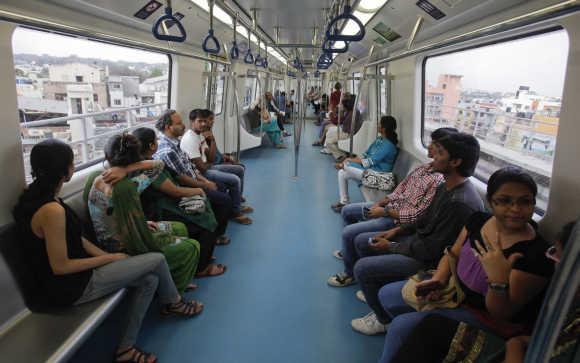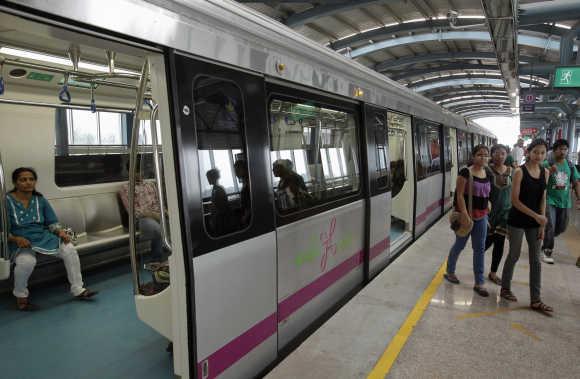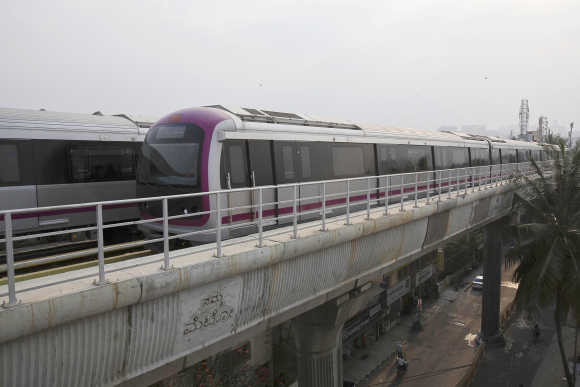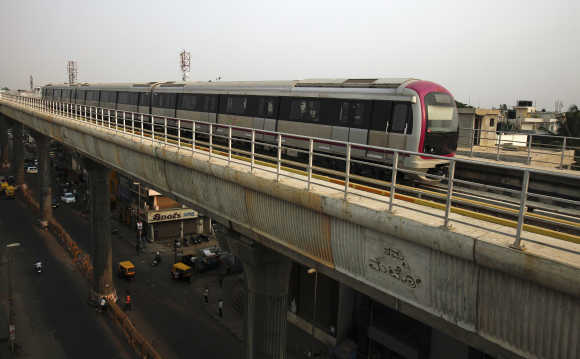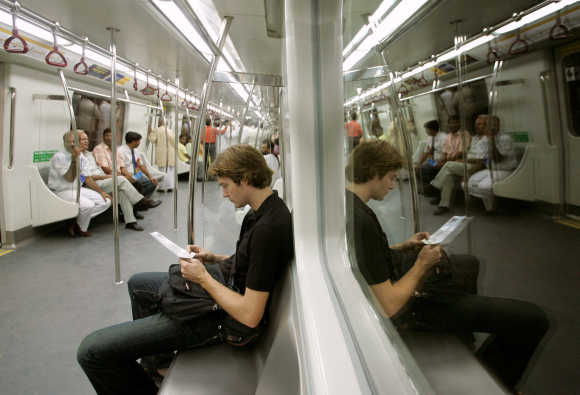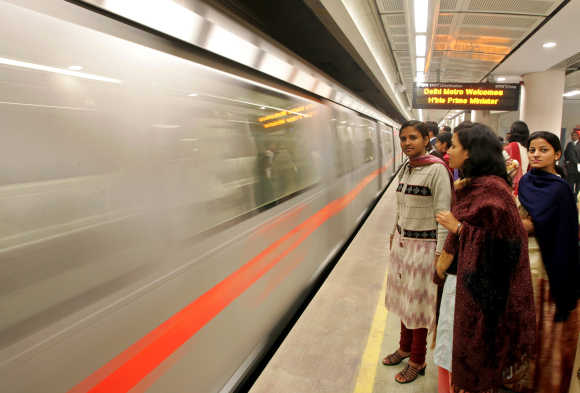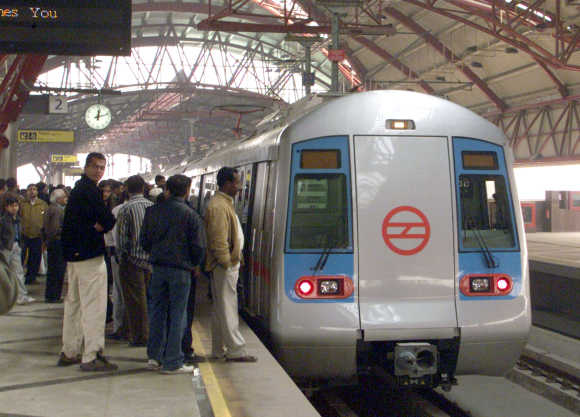 | « Back to article | Print this article |
A tale of Bangalore and Delhi Metro
The metro network in Bangalore started operations a few months ago. It covers a relatively small stretch of about seven kilometres.
In comparison, the Delhi Metro has been operating its network for almost a decade, and now covers a distance of over 190 kilometres.
Yet, a comparison between the two networks will tell you a lot about the way public transport projects are conceived, executed and operated in India.
And there are obvious lessons for those who intend to embark on similar projects planned for several cities across the country.
The Bangalore Metro network was initially conceived as a public-private partnership in 1993, almost at around the same time as the Delhi Metro idea.
Click NEXT to read more...
A tale of Bangalore and Delhi Metro
The difference was that while the Bangalore Metro could not make headway on the project for almost a decade, breaking its head over how it could implement the correct concessionaire agreement with the prospective operator, the Delhi Metro stayed away from the PPP model and set up a project in which the Centre and the state government were equal partners.
It began implementing the project from 1995 and, by 2002, trains began running on a short stretch of about five kilometres. That perhaps is the first lesson. How effective is the PPP model in public transport projects?
Click NEXT to read more...
A tale of Bangalore and Delhi Metro
The Bangalore Metro explored various options and even did the unthinkable by asking the prospective bidders of the project to indicate along with their bids the nature of the concessionaire agreement that they would prefer.
Little did it realise then that the framing of a concessionaire agreement should have preceded the bidding process, so that the bidders made their offers on that basis.
Fortunately, the Bangalore Metro soon recognised the problems with the PPP model, opted for what the Delhi Metro did, and work on it began in 2003.
It is, therefore, important for policy makers to realise that the choice of the PPP model is no guarantee for ensuring efficient and smooth execution of a public transport project.
Click NEXT to read more...
A tale of Bangalore and Delhi Metro
Whatever be the model, the project promoters should get the basics right and follow the well-established principles of any model of executing a project. This is not rocket science.
There is no reason why the Bangalore Metro should have wasted ten years before discarding the PPP model and allowing the Centre and the state government to be the joint owners of the project. Both models can work.
If you opt for the PPP model, make sure that the concessionaire agreement with the operator is foolproof and fixes all responsibilities in a transparent way.
Click NEXT to read more...
A tale of Bangalore and Delhi Metro
Similarly, operational freedom and accountability through an institutional framework are a necessary precondition for the success of a metro project where the Centre and the state are joint owners.
The Delhi Metro's execution and operation stood out for another reason - it had E Sreedharan as the managing director, who by the time he came to head the project had acquired an icon-like status in executing railway projects.
Few in the government system or outside could stand in the way if Sreedharan decided a certain course of action. It's true that the Indian Railways succeeded in forcing the broad-gauge model for the first phase of the Delhi Metro, against the wishes of Sreedharan.
Click NEXT to read more...
A tale of Bangalore and Delhi Metro
But the second phase did see the introduction of standard gauge, an indication that the Delhi Metro managing director would eventually have his way whatever the nature of his opposition.
Sreedharan executed the Delhi Metro project with efficiency, speed and only a few minor accidents. He introduced a lean management structure.
But he also showed scant regard for the established processes for the selection of contractors or vendors, and decided to choose his own methods.
Since he enjoyed the reputation of a man of integrity and had tasted of success as well, the voices of protest against the way he ran the project were few and muted.
Click NEXT to read more...
A tale of Bangalore and Delhi Metro
In a system with an acute scarcity of efficient managers with integrity, Sreedharan enjoyed leeway that would be denied to most others in similar situations.
In sharp contrast, the Bangalore Metro project is being executed without a highly visible leader like Sreedharan. The managing director of the Bangalore Metro Transport Corporation is N Sivasailam, a mechanical engineer who joined the Indian Administrative Service in 1985.
He maintains a low profile, but that in no way has adversely affected the efficiency of execution in the project, although there were delays in the early stages of its implementation.
Click NEXT to read more...
A tale of Bangalore and Delhi Metro
The project is running efficiently and it has already begun earning profit on the short stretch on which it operates. It has a long way to go, but the Bangalore Metro has established that an efficiently executed project need not be a one-man show. Instead, it can be the result of team work helped by a strong institutional framework.
Even in tariff-setting, the Bangalore Metro has charted a new path that is more transparent and participative than that followed by the Delhi Metro.
Click NEXT to read more...
A tale of Bangalore and Delhi Metro
The recommendations of the tariff advisory committee of the Delhi Metro are binding on the operator. However, the composition of the committee and the nature of its recommendations are not immune to political influence or pressure.
In the case of the Bangalore Metro, tariffs are set transparently after a non-governmental organisation conducts open consultations among all stakeholders including commuters.
Clearly, the new metro networks coming up in different parts of the country have a lot to learn from the experiences of Delhi and Bangalore.
